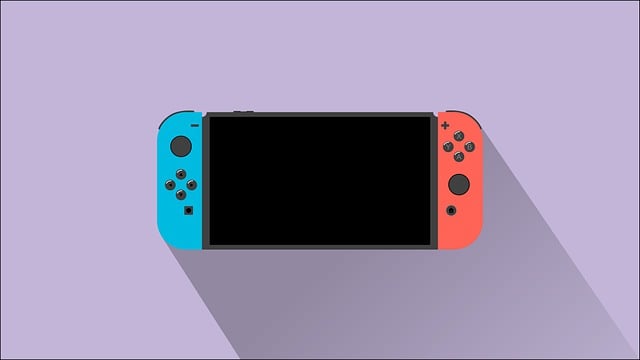The digital media landscape has drastically evolved from text-based interfaces to immersive multimedia experiences. Key formats like DivX and WMV, introduced in the late 1990s, drove significant advancements in video compression, sharing, and compatibility. Converting DivX to WMV became a pivotal innovation, simplifying playback across devices and sparking a digital media revolution. This process bridged two distinct codecs, enhancing interoperability and breaking down compatibility walls for users worldwide. With promising future prospects, the technology continues to shape storytelling and entertainment, paving the way for advancements in VR and AR.
In the ever-evolving landscape of digital media, a groundbreaking innovation stands out: the birth of formats like DivX and WMV. This article delves into the historical context, tracing the evolution of digital media from its nascent stages. We explore how these formats, while revolutionary in their time, faced limitations that hindered widespread adoption. Subsequently, we uncover the transformative power of converting DivX to WMV, a solution that promises to revolutionize digital content accessibility and shape future multimedia experiences.
The Evolution of Digital Media: A Historical Perspective

The digital media landscape has undergone a remarkable metamorphosis since its early days, evolving from simple text-based interfaces to immersive multimedia experiences. This transformation can be traced back to the pioneering days when formats like DivX emerged as game-changers in video compression and sharing. The need for efficient file conversion and compatibility drove significant advancements, leading to the creation of versatile solutions that cater to diverse user needs.
Historically, the Convert DivX to WMV process symbolized a key milestone in this evolution. DivX, known for its high-quality video encoding at smaller file sizes, required a corresponding format for seamless playback on various devices. WMV (Windows Media Video) filled this gap, offering compatibility and ease of use. This innovation not only simplified the user experience but also paved the way for future multimedia standards, fostering a vibrant and bustling digital media revolution.
Introducing DivX and WMV Formats: Their Roles and Limitations

The digital media landscape evolved significantly with the introduction of DivX and WMV formats, each playing a unique role in shaping video compression and sharing. DivX, launched in 1998, was one of the earliest popular video codecs, known for its ability to offer high-quality video compression while maintaining reasonable file sizes. This made it a game-changer for online video sharing, enabling users to easily upload and download videos without compromising on visual quality. The format’s flexibility allowed for easy conversion DivX to WMV, catering to a wide range of devices and media players.
However, as technology advanced, WMV, developed by Microsoft in 1999, emerged as a formidable competitor. Optimized for Windows Media Player, WMV focused on providing seamless playback and efficient streaming, especially within the Windows ecosystem. While it offered comparable video quality to DivX, its integration with specific platforms limited its versatility. The format’s proprietary nature also posed challenges for users looking to convert DivX to WMV, as it required specialized tools and might not always ensure perfect compatibility.
Overcoming Challenges: The Innovation Behind Convert DivX to WMV

In the realm of digital media, where formats and standards evolve rapidly, one pioneering innovation stands out: converting DivX to WMV. This seemingly simple task has been a challenging hurdle for many content creators and users due to the unique properties of these two codecs. DivX, known for its high compression rates and video quality, has long been a favorite among enthusiasts. However, its complex structure made direct conversion difficult. Meanwhile, WMV, favored by Microsoft for its use in Xbox and Windows Media Player, offered excellent playback compatibility but was less popular for video editing due to its proprietary nature.
Overcoming these challenges required innovative solutions. Developers had to decipher the intricate inner workings of DivX and create algorithms that could accurately translate it into WMV format without losing quality. This involved meticulous coding, extensive testing, and a deep understanding of both codecs. The end result was not just a converter tool but a breakthrough in interoperability, bridging two disparate formats and enabling users to enjoy their content seamlessly across different platforms.
Impact and Future Prospects: Revolutionizing Digital Content Accessibility

The ability to seamlessly convert DivX to WMV is a game-changer in digital media accessibility, offering unprecedented convenience and flexibility for content consumers. This innovative process streamlines the way multimedia files are shared and viewed, breaking down compatibility barriers that once hindered seamless enjoyment. By eliminating the need for complex setups or specialized software, users from all walks of life can now effortlessly access their favorite videos in the format they prefer.
Looking ahead, the future prospects of this technology are promising, with potential to further enhance digital content accessibility across various platforms and devices. As advancements continue, we can expect even smoother conversions, improved file sizes, and enhanced compatibility with emerging technologies like Virtual Reality (VR) and Augmented Reality (AR), opening up exciting new avenues for immersive storytelling and entertainment experiences.
The digital media landscape has evolved dramatically, driven by innovations that enhance content accessibility. One such game-changer is the development of formats like DivX and WMV, which, while having their roles and limitations, have paved the way for significant improvements in video playback. The breakthrough introduced in converting DivX to WMV has overcome critical challenges, ensuring smoother transitions and wider compatibility. Looking ahead, this technology promises to revolutionize digital content accessibility, making it more inclusive and efficient for all users worldwide.
